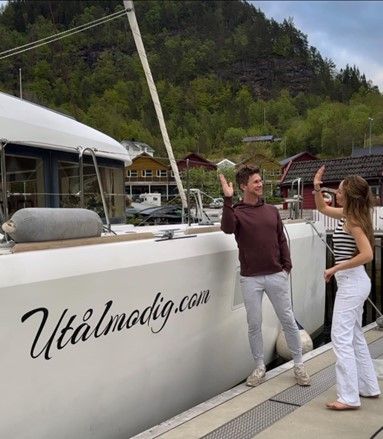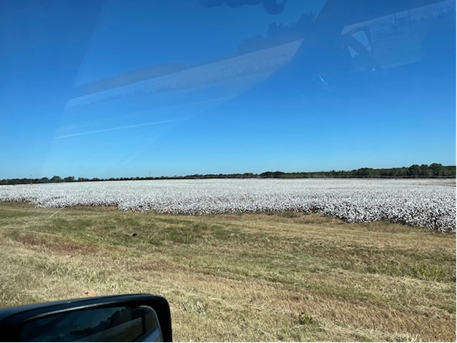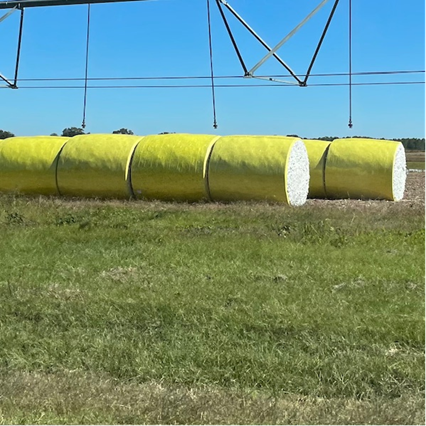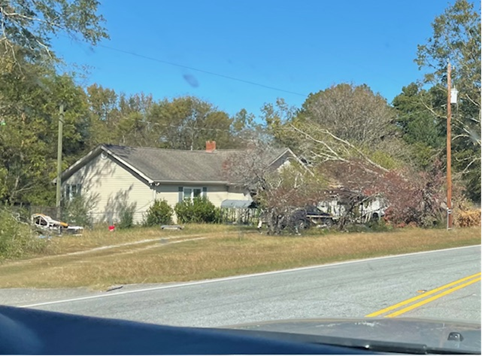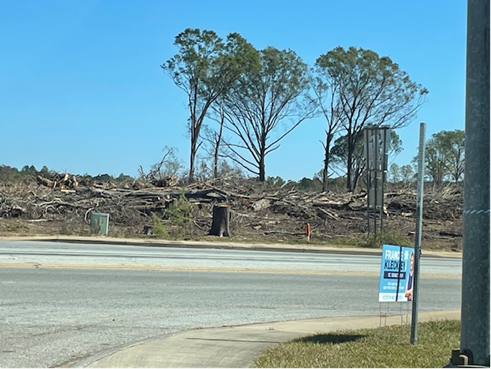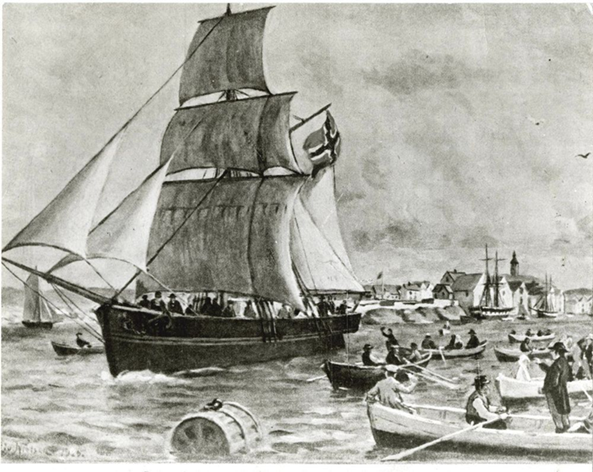
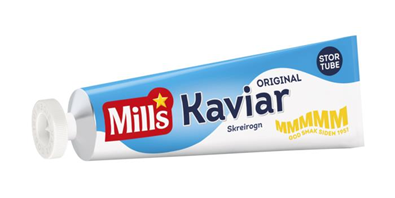
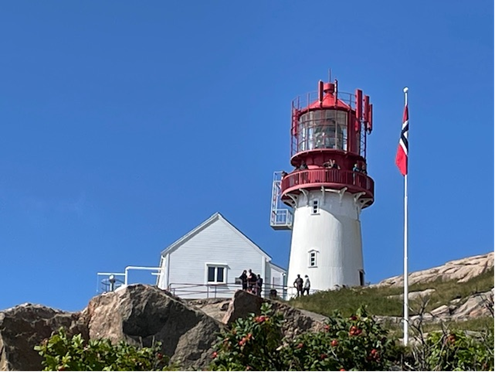
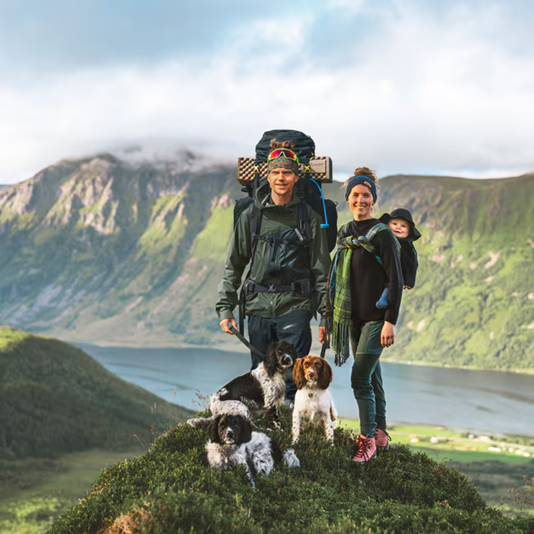
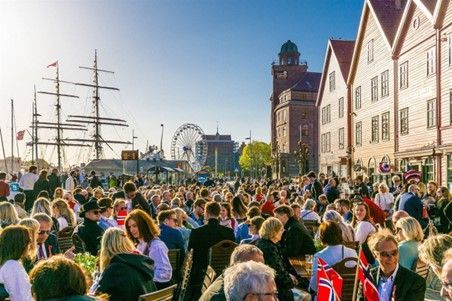
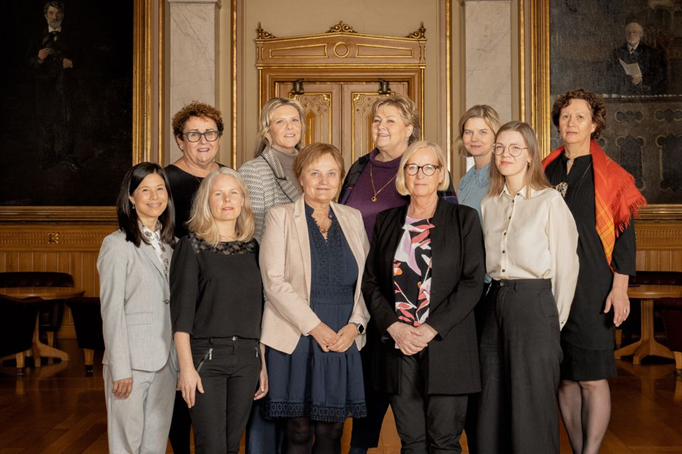

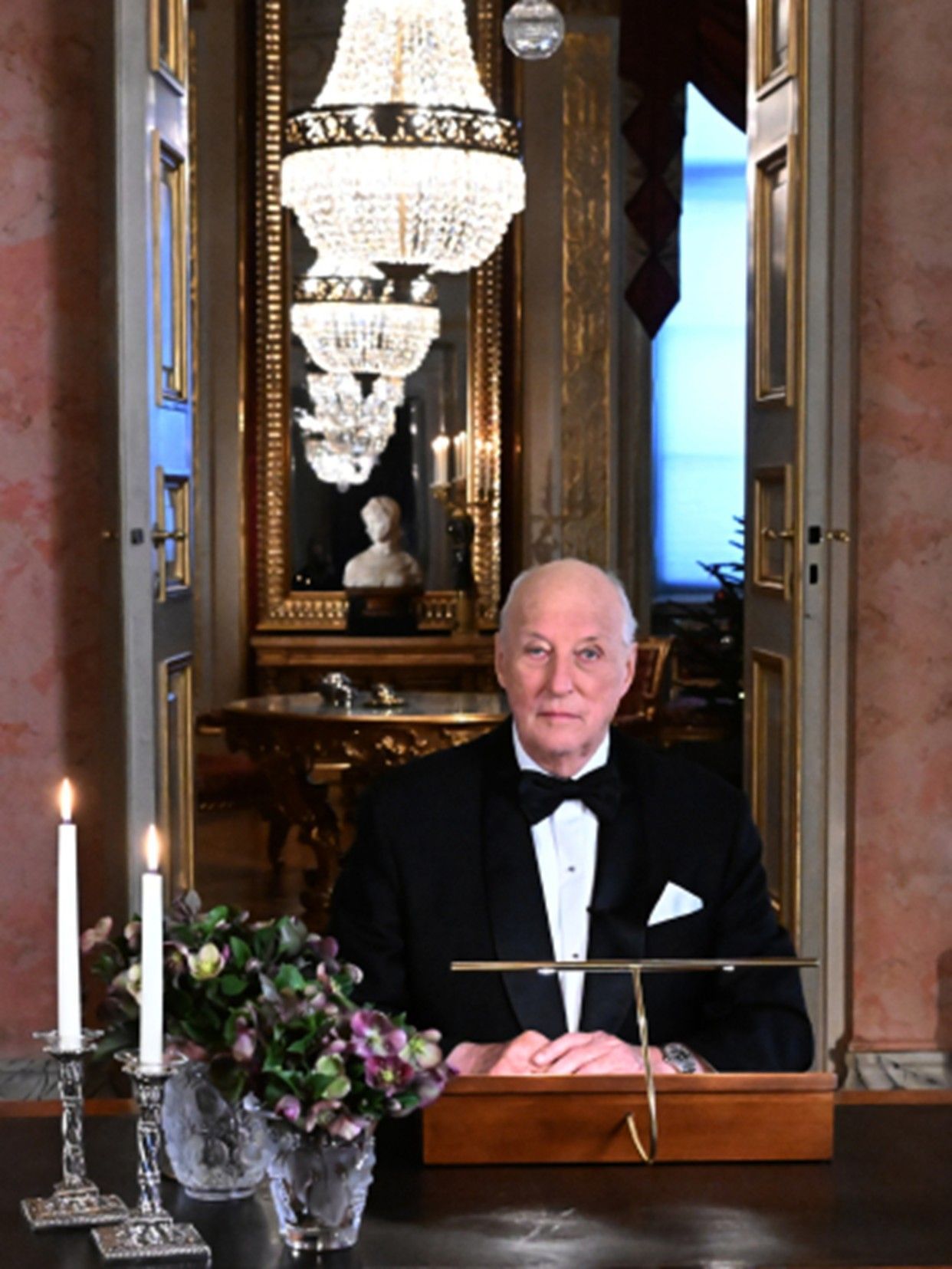

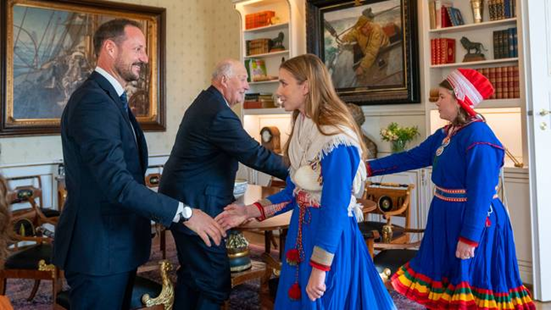
Even before the most recent hurricane (Milton) hit Florida, Vigdis and I were planning a long drive visiting six states and both the East Coast and Gulf Coast of Florida. The purpose of this trip was to experience with our own eyes how the recent storms have impacted individual locations and, for me in particular, the effects on the transportation industry. As a Norwegian, we have little experience with hurricanes, and I believe we don’t get the full picture through the news as we will discuss further in this article. That’s why we wanted to do this trip before we returned to Norway for Thanksgiving. We expect many questions from family and friends about the election and all the storms, so we wanted to be better prepared. What’s better than talking to local people and seeing it with your own eyes? Relative to the election, this trip was also to experience the so-called “divided country.” We did not find a divided country, but we did find a lot of love, unity and hope, my theme for this year.
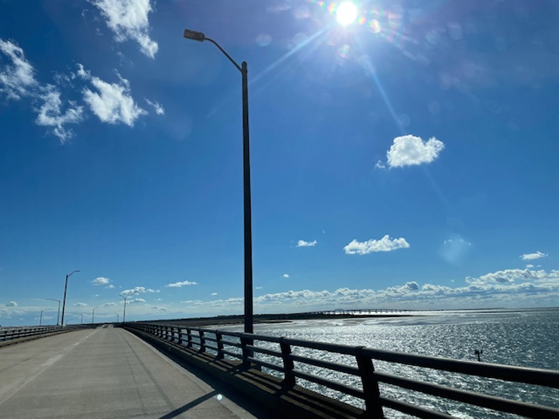
Starting Wednesday, October 16th through the following Wednesday, October 23rd, we drove 2,950 miles (4,500 km) in 8 days. This is equal to the distance from Oslo to Rome, Italy and back (3,280 miles / 4,980 km) or a little longer than from Washington DC to San Francisco (2,815 miles / 4,200 km). We left Maryland heading down the Delmarva (Delaware/Maryland/Virginia) Peninsula, crossing the Chesapeake Bay Bridge/Tunnel to get from the peninsula to the mainland and made our first stop in Norfolk, Virginia, a major port both for naval and merchant vessels. We counted sixteen vessels on the Bay, the entrance from the Atlantic Ocean to the Chesapeake Bay, on their route to Norfolk, Baltimore or neighboring ports. From Norfolk, we continued down through Savannah, GA -- another important port on the East Coast of the United States. The entire way, we saw hundreds of electric power trucks going north after serving in North Carolina, Georgia and Florida. As we had been somewhat nervous about venturing south, this was a good sign for us as all the trucks were going in the opposite direction. It’s impressive to see so many people coming from afar to serve their suffering countrymen. From Savannah, we kept going to Jacksonville, Florida, our second stop. Jacksonville is a particularly important harbor for both ocean carriers and railroads. When we arrived, all was back to normal after the latest storm. Interestingly all the people we met were far more focused on the Jacksonville Jaguars (the NFL football team) playing at home that weekend. From Jacksonville, we traveled south to Daytona Beach, Florida -- our last stop on the East Coast. As you may have seen on the news, the East Coast of Florida was severely affected by Hurricane Milton due to tornados and strong wind events as the hurricane made landfall on the west coast and moved across the State.
We crossed Florida to Orlando, the home of Disney World and Universal Studios, another area the storm passed through, happy to see that the damage was not too severe. All had seemingly come back to normal with the theme parks in full operation. We did not stop again until we reached Fort Myers on the West Coast. We spent two days in Fort Myers visiting some very good friends we hadn’t seen in ten years. Our friends Judy and Ken could give us the love we had been waiting for, but they also showed us their own condominium hit by Hurricane Ian two years ago. So many people in this area are still waiting for compensation from their insurance companies from that storm. The second day we made a side trip to Fort Myers Beach and saw how restoration from the devastating damage of Hurricane Ian two years ago has been complicated by Hurricanes Debby, Helene and Milton. Along the beach, we could see people united to rebuild with no time for politics. There are still many beachfront lots with holes in the ground from swimming pools without any houses remaining. Ten years ago, the government changed the building code for new houses, making the replacement of buildings much more expensive. The insurance on the older houses will not cover rebuilding under the new building code requirements.
Before leaving home, we had been following Hurricane Milton and wondering where it might come ashore -- the Florida Panhandle, further south on the West Coast or even the East Coast? When we left Fort Myers, we went north through Sarasota just south of Tampa, the area where Milton made a direct hit on October 10th. We saw a lot of debris, but life is coming back. Traffic is back to normal, very heavy as usual. Hurricane Milton made landfall on the west coast of Florida less than two weeks after Hurricane Helene devastated the Big Bend region.
When Hurricane Milton hit, this area was still recuperating from heavy rainfall from Hurricane Debby on August 7th with accumulations up to 20-inches in some places. Hurricane Debbie moved northwards from Sarasota, intensifying before making landfall near Steinhatchee, Florida, east of Tallahassee, moving north through the Southeastern United States, causing widespread flooding from heavy rain. It re-emerged in the Atlantic and made landfall again in South Carolina continuing inland over the United States before traversing Atlantic Canada.
The area suffered a second blow seven weeks later when Hurricane Helene made landfall in the Big Bend region of Florida on September 26th near the city of Perry. A state of emergency was declared in Florida and Georgia due to the significant impacts expected, including very high storm surge along the coast and hurricane-force gusts as far inland as Atlanta. Helene inundated Tampa Bay, breaking storm surge records along the entire west coast of Florida but also causing catastrophic rainfall-triggered flooding and numerous tornadoes in western North Carolina, East Tennessee, and southwestern Virginia.
Tallahassee, the capital city of Florida, is always afraid of losing their stunning old trees. Luckily, Hurricane Milton did not affect the city but almost all the areas to the east and south. We wanted to visit Tallahassee because we had never been there. Coming into Tallahassee, we could observe no major problems, and we were so happy we did this route. What a beautiful town with its fantastic trees! If you haven’t been there, we will strongly recommend you put it on your list of places to visit. We had time to do some sightseeing and visited the Governor’s Mansion and the Capitol building. Next time we will make sure we have more time to also include some of their parks. In the evening, we went out for a pizza, and the couples at our neighboring table asked where we were from; we told them we were Norwegians, and it turned out the husband was a third generation Norwegian himself, with family coming over from Finmark. Both his father and grandfather had been carpenters in Wisconsin with the name Lefstead (Lefstad in Norwegian). He was a retired City Architect and could tell us a lot of history and what we should see. We made a good contact, and he followed up with a phone call the following morning! We agreed to assist them in planning their trip to Norway in the future. He had never been to Norway and would like to go to Finmark and experience the changes from what the grandfather had told him. Vigdis and I concluded we can meet Norwegians everywhere. It’s a small world.
From Tallahassee, we drove the smaller roads straight north through Georgia. It was a big surprise to see how badly the state was hit because no news that we had watched had covered the storms effects in Georgia. Many houses were hit by falling trees and we could see debris for hours. Also, we could once again see so many people working together to clean up their community. We quickly learned that news may be selective in its coverage, and that it will be impossible to retell what we have seen with our own eyes. I can try to tell the story in this article, but there are so many impressions we cannot begin to share with you.
From Georgia, we went through South Carolina and North Carolina before returning home. We made a few stops and spent several nights having dinner with locals. Let me tell you the truth about the hard-hit areas in the mountains of North Carolina, being covered and criticized in the news. The truth is that these are very remote areas with only two roads going in – both roads were washed away during the storm, and there was no way to get the rescue equipment in. We met employees from a local Ford dealer; they got involved early collecting supplies and taking them to the local communities, as so many groups have done all over the country. They told us their business owner had used his own aircraft to fly the supplies in the first days after the storm, and he was not the only pilot doing similar trips. The good news is that a temporary road has made it possible to get in with more heavy equipment now.
Our reflection after this long trip is that this country comes together when it’s needed. We are all working together towards the same goal when disaster strikes -- to rebuild our community. There is so much love for our neighbors. Our overall experience is that most things are again working as normal, with the exception of the individual suffering of people who still have a lot of work to be done. Let’s reach out to them in this season of Thanksgiving and Christmas and in the difficult years of rebuilding ahead.
Back in Maryland, we are adjusting our impressions and will do our best to communicate that the country is not as divided as we see in the news. There is so much love and hope -- we should all appreciate and build upon it.
Good to see the normal season for the cotton in Georgia (Photo V. Syversen)
Cotton stored as we store hay in Norway (Photo: Vigdis Syversen)
We were surprised to see the significant damage in Georgia (Photo: V. Syversen)
Debris alongside the road in Georgia
Picture by Vigdis Syversen

